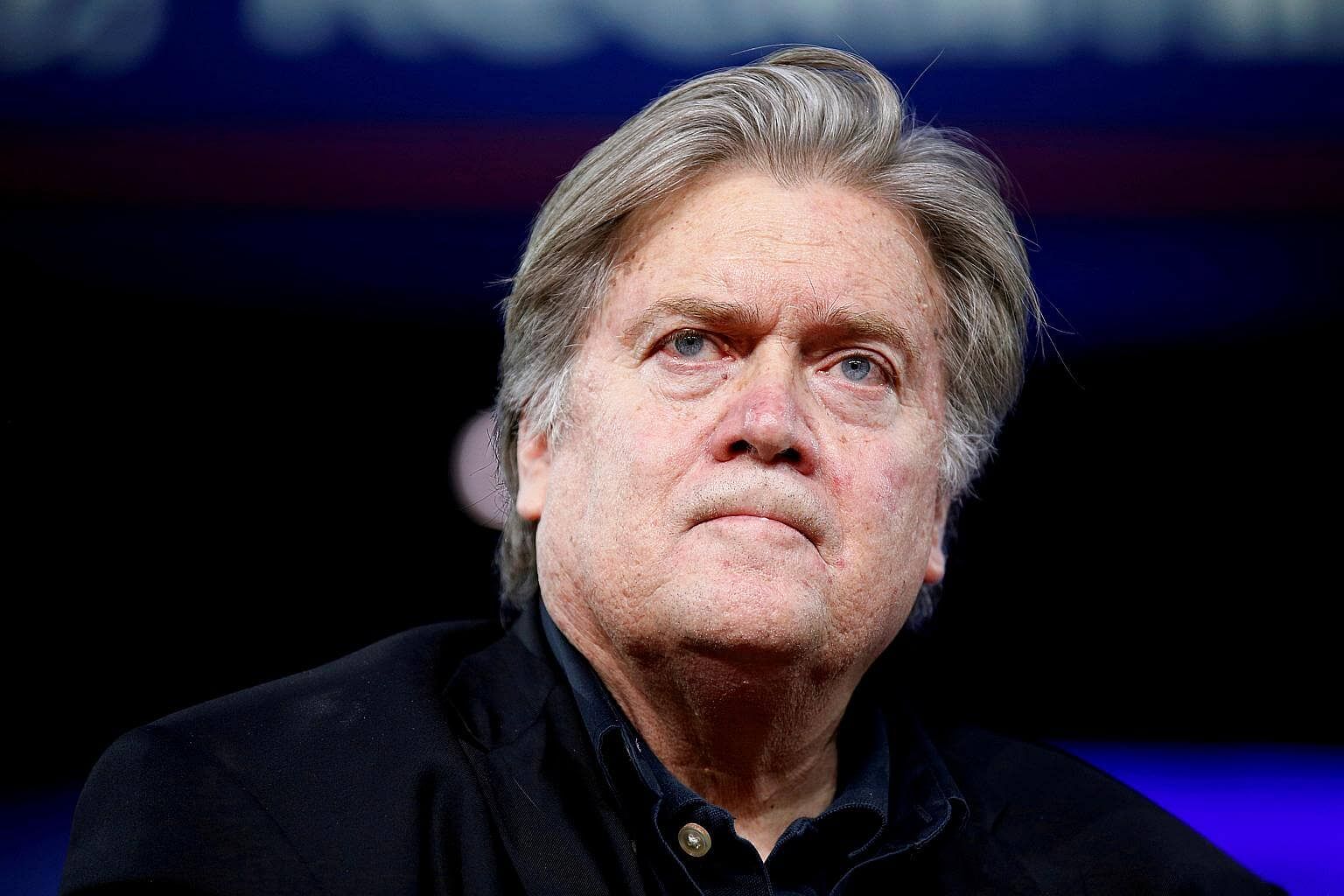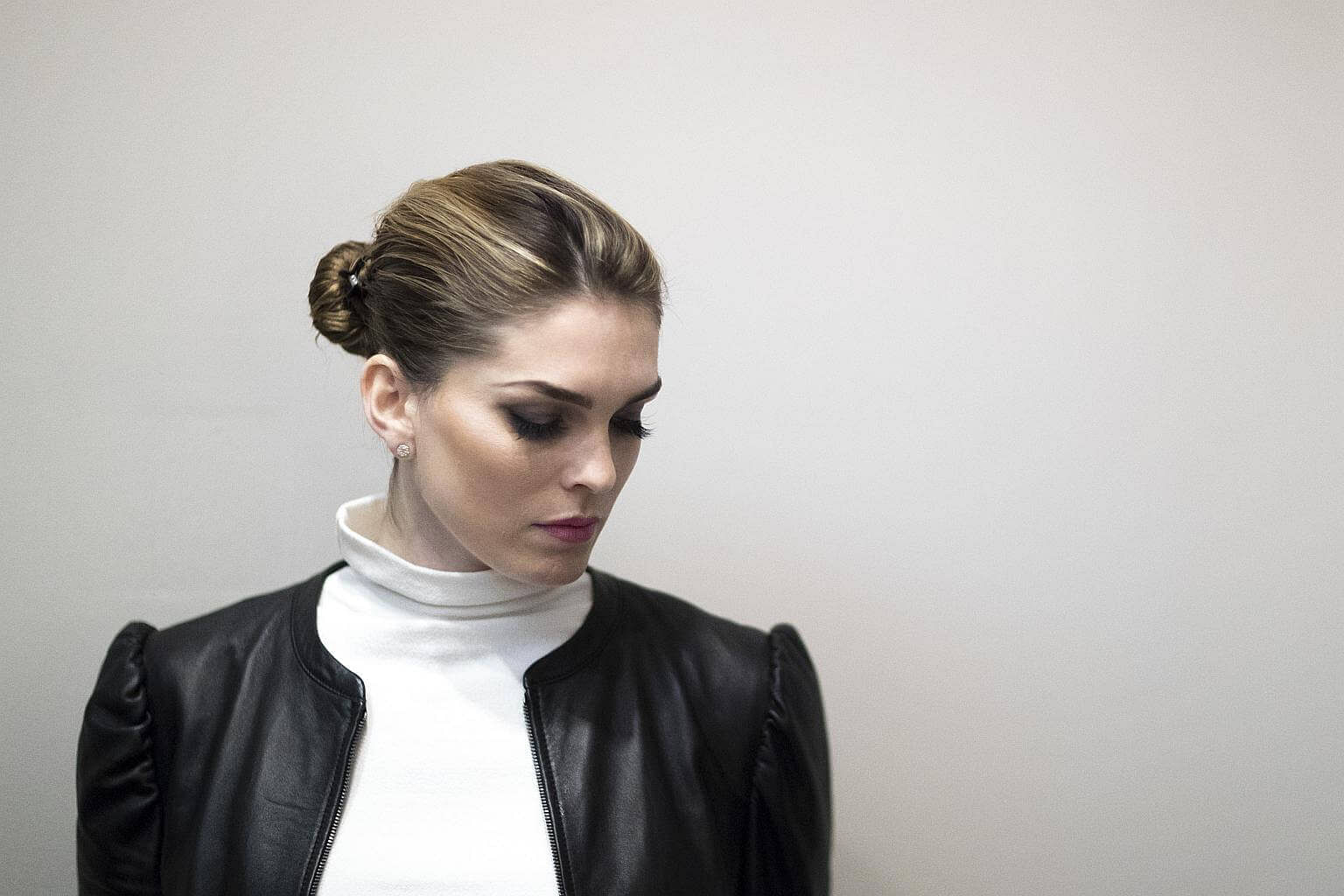WASHINGTON (AFP, Reuters) - US President Donald Trump on Tuesday (March 13) said he had replaced Secretary of State Rex Tillerson with Central Intelligence Agency Director Mike Pompeo, ousting the embattled top diplomat after a series of public rifts.
Mr Tillerson's departure represents the biggest staff change in the Trump Cabinet so far and caps months of tensions between the Republican president and the 65-year-old former Exxon Mobil chief executive.
Mr Trump announced the Cabinet shakeup on Twitter and said he had tapped the CIA's deputy director Gina Haspel to replace Mr Pompeo at the intelligence agency.
Here are the main Trump aides who have come and already gone in the first 14 months of his presidency:
NATIONAL SECURITY ADVISER MICHAEL FLYNN

Flynn entered the White House with a cloud over him - he had been fired by Barack Obama as defence intelligence chief and was deeply distrusted across the intelligence community. He was also being investigated by the FBI for his contacts with Russians.
Flynn lasted only 22 days, forced out on February 13, 2017 over top-level concerns that he could be compromised by false statements he made over his contacts with Russian officials and his paid lobbying for Turkey during the campaign.
PRESS SECRETARY SEAN SPICER

Spicer's troubles began immediately when he defended his boss's false claim about the size of the crowd at his inauguration.
Spicer said it was "the largest audience to ever witness an inauguration, period," a claim easily disproven by aerial photos of president Barack Obama's far larger 2009 crowd.
Spicer instantly lost credibility with the media, and became the favourite administration target of the comedy show Saturday Night Live, played as an oafish and irritable Trump fall-guy.
Increasingly ineffective, Spicer resigned on July 21, 2017 after the abrasive Anthony Scaramucci was named White House communications director.
CHIEF OF STAFF REINCE PRIEBUS

The faceless former chairman of the Republican National Committee was supposed to manage the White House workforce and control the door to Trump's office.
But he couldn't manage the president himself, leaving the West Wing to sink into chaos.
A close ally of Spicer, Priebus took a hard fall when Trump chose Scaramucci as communications director.
Priebus took the exit door on July 31, 2017 to be replaced by retired Marine Corps general John Kelly, who brought a measure of discipline around the Oval Office.
COMMUNICATIONS DIRECTOR ANTHONY SCARAMUCCI

"The Mooch" was in and out of the White House in a record 10 days.
He alienated Kelly with his brash public play for the chief of staff job after Priebus quit. And his bid for public attention - he was immediately a late night TV icon for his tailored suits, aviator sunglasses and slicked back hair - was a no-no for Trump.
CHIEF STRATEGIST STEVE BANNON

The architect of Trump's nationalist-populist political stance and his election victory, Bannon was nicknamed the Prince of Darkness and the Shadow President.
His economic nationalism became the linchpin of Trump policies, even as many of his other ideas were rebuffed by policy rivals.
After Kelly arrived, his constant clashes with other Trump advisers became untenable, as did his ties to the extreme right, which drew accusations that Trump represented racists.
Bannon left on August 18, 2017.
HEALTH SECRETARY TOM PRICE

A former doctor and congressman, Price spearheaded Trump's pledge to "repeal and replace" Obama-era health care reforms.
But Price was forced to resign on September 20, 2017 when it emerged that he had flown 26 trips during 2017 on chartered private aircraft, costing the US taxpayer around US$400,000 (S$527,870).
STAFF SECRETARY ROB PORTER

Porter, who handled the documents that went to and from Trump's desk, came to the White House with a golden pedigree: Harvard, a Rhodes scholarship to Oxford, Harvard Law and then chief of staff for Senator Orrin Hatch.
But he also had a secret: his two former wives both accused him of domestic violence. When this came to light in early February 2018, raising security issues, he was forced to step down although he denies the claims. At the time, he was dating Hope Hicks.
COMMUNICATIONS DIRECTOR HOPE HICKS

The svelte 29-year-old former model was a close aide to Trump since 2014, when she joined his real estate firm.
In early 2015, he named her press secretary for his White House campaign. After his election triumph, she was named White House director of strategic communications, a job that allowed her to remain behind the scenes, coaching Trump while never appearing in public.
In August 2017, she became communications director, continuing to shape Trump's message without speaking for him.
But Hicks also ran into trouble. She became a focus of the Justice Department's investigation into links between the Trump campaign and Russia, in relation to her knowledge about a June 2016 meeting between top campaign officials and a Russian lawyer offering dirt on Trump's opponent Hillary Clinton.
She also came under criticism for her handling of public relations when Porter resigned. Hicks had helped craft the official response to the scandal, despite her personal involvement with Porter.
TOP ECONOMIC ADVISER GARY COHN

Gary Cohn, a former president of investment bank Goldman Sachs, resigned as Trump's top economic adviser on March 6 in protest against the President's decision to levy global steel tariffs.
A long-time Democrat, Cohn had always been an uneasy fit in an administration propelled to power by strident nationalism.
Trump's decision to impose steep tariffs on steel and aluminium imports was the final straw for the former Wall Street banker.
The first eruption of tensions with Trump came last year when Trump balked at condemning neo-Nazis and far-right extremists who had led a violent rally in Virginia in August. Cohn, who is Jewish, said he considered resigning.
SECRETARY OF STATE REX TILLERSON

The ouster of Mr Tillerson represents the biggest shakeup of the Trump Cabinet so far. The change had been expected since October 2017 when reports surfaced about a falling out between Mr Trump and Mr Tillerson, 65, who left his position as chief executive of Exxon Mobil to join the administration.
According to reports, Mr Trump had asked Mr Tillerson to step aside, and the embattled top diplomat cut short his trip to Africa to return to Washington.
His departure came amid delicate negotiations with North Korea. His distance from Mr Trump's inner circle was clear when the President on March 9 accepted an invitation to meet North Korean leader Kim Jong Un to the surprise of Mr Tillerson, who was travelling in Africa at the time.
The President - who has long clashed will Mr Tillerson, who he believes is "too establishment" in his thinking - felt it was important to make the change now, as he prepares for talks with North Korean leader Kim Jong Un, as well as upcoming trade negotiations, three White House officials told the New York Times.

